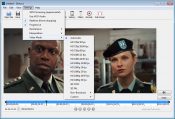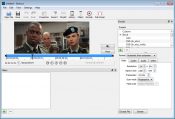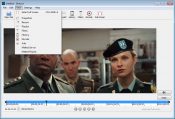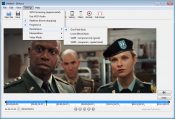- Review
Shotcut is a video editor that helps you retouch movies and other videos. It is fairly easy to use, only requiring point and click to unlock a series of functions and advanced features. With custom filters, and the ability to combine files, trim videos, and convert them, it is a comprehensive and diverse piece of PC software.
We have reviewed it and will discuss some key features and important things to know. First, let’s take a look at newer features that were added:
Speed and Pitch
You can turn on the setting that will automatically correct your pitch.
This feature means that if you speed up the file, it will adjust the pitch according to the new speed.
New Timeline Command
Now, you can replace items with R. If you navigate the timeline clip menu, you can select a chosen clip and then replace it more easily.
Multiple Formats
Luckily, if you need to work with various formats, it will support it. You can combine different frame rates and resolutions when you enable the “multi-format timeline” option. It includes audio, video, and more.
It can be a lifesaver when needing to edit a project. The frames can be frozen, so you never have to worry about skipping a frame that didn’t receive the treatment as the other ones.
It ensures a more cohesive final product. You can correct and enhance any feature that you need to.
File Formats
Have you ever had a random file format that wouldn’t work with any of your editors? Well, this solves that. You can use it to play MLT XML tracks. You can even create your playlists from this file type.
Then, when you’re finished, you can stream it. Just encode it properly, and you’re ready to go.
Filters
You can use filters such as sharpen, saturation, white balance, rotate, mirror, glow, crop, color grading, and blur. It means that you can customize your movie to achieve it no matter your appearance.
Audio Filters
Shotcut enables you to use the pan, balance, and gain filters. It gives your audio a full sound and allows you to adjust errors or odd-sounding pieces.
Encoding
No video editor would be complete without the ability to encode your final product to the desired format of your choice. It includes MOV, OGG, WEBM, AVI, MPG, M2T, MP4, FLV, and M4A.
Network Protocol
When you have edited your video, use the network protocol. It allows you to pick a port and adjust your parameters before making your video a URL address so it can be streamed.
Wrapping It Up
To conclude, Shotcut impressed us during this review. It has a full suite of features and is very efficient with its functions. We especially liked that you can encode the final video to virtually any format, even audio, if you want to.
It is nice if you’re storing many files on a low-space PC but still need powerful editing features.
- supports oodles of audio and video formats and codecs thanks to FFmpeg (or libav as-built)
- supports many image formats such as BMP, GIF, JPEG, PNG, SVG, TGA, TIFF as well as image sequences
- no import required - native editing
- frame-accurate seeking for many formats
- multi-format timeline: mix and match resolutions and frame rates within a project
- network stream playback (HTTP, HLS, RTMP, RTSP, MMS, UDP)
- Blackmagic Design SDI and HDMI for input and preview monitoring
- JACK transport sync
- deinterlacing
- detailed media properties panel
- recent files panel
- save and load trimmed clip as MLT XML file
- load and play complex MLT XML file as a clip
- audio signal level meter
- volume control
- scrubbing and transport control
- flexible UI through dock-able panels
- encode/transcode to a variety of formats and codecs thanks to FFmpeg (or libav as-built)
- capture (record) SDI, HDMI, webcam (V4L2), JACK, PulseAudio, IP streams, X11 screen
- stream (encode to IP) files and any capture source
- batch encoding with job control
- create, play, edit, save, load, encode, and stream MLT XML playlists
- unlimited undo and redo for playlist edits including a history view
- connect to Melted servers over MVCP TCP protocol; control the transport playback of Melted units
- edit Melted playlists including suport for undo/redo
- OpenGL GPU-based image processing
- multi-core parallel image processing when not using GPU (and frame-dropping is disabled)
- video filters: Blur, Color Grading, Crop, Glow, Mirror, Saturation, Sharpen
- 3-way (shadows, mids, highlights) color wheels for color correction and grading
- eye dropper tool to pick neutral color for white balancing






